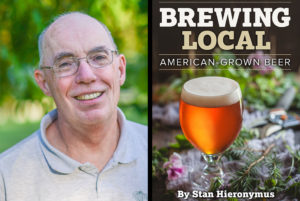Jeffrey Pilcher, Professor of History at the University of Toronto Scarborough, has been a leading figure in the emerging scholarly field of food history. He has taught at The Citadel in Charleston, the University of Minnesota, and the University of Gastronomic Sciences in Pollenzo, Italy.
Perhaps the first official job posting for a historian of American beer was announced in the summer of 2016 by the American Museum of National History at the Smithsonian Institution in Washington, DC. Literally thousands of people applied, in part because media commentators had described the job as simply traveling the country drinking beer. Few of the applicants had the advertised qualifications, starting with a PhD in history, but the news stories certainly did raise popular interest in an emerging scholarly field. So what exactly does a professional beer historian do?
Readers are probably more familiar with the work of journalistic beer writers than with scholarly historians of beer. The late Michael Jackson pioneered the genre of beer writing in the 1970s through his advocacy of then unfashionable styles like full-bodied British ales and Belgian sours, and in doing so he arguably shaped the modern world of beer. Subsequent writers have often taken a historical approach; Pete Brown, for example, sought to recreate the original India pale ale by literally transporting a keg of IPA by ship from England to India for his 2010 book Hops and Glory. These authors were deeply knowledgeable about their topic — none more so than Jackson — but their criticism was intended first and foremost to improve the taste of beer — a worthy goal in itself.
The career of the beer historian is certainly not for everyone.
For the professional historian, by contrast, beer is less an end in itself than a means for telling critical stories about broader subjects such as gender, capitalism, and empire. Judith Bennett, author of the 1996 book Ale, Beer, and Brewsters in England, was interested in the working lives of medieval women, for whom beer was often an important source of income until displaced by male guilds. In contrast, Maureen Ogle wrote the 2006 book Ambitious Brew as a business history of the American beer industry. And Malcolm Purinton composed his recent dissertation Empire in a Bottle to describe how conflicts between British and German brewers for imperial markets led to the rise of a particular variety of beer — pilsner — as a global commodity. Based on years of archival research, these works show in great detail the way that beer has been a critical site of gendered labor, industrial transformation, and global consumerism.
The career of the beer historian is certainly not for everyone. The job prospects are highly uncertain, with thousands of applicants for just one position. And all this after years of graduate training in which readings about beer form only the smallest part of the curriculum. (Mind you, we do brew in my History of Beer and Brewing seminar at the University of Toronto, although if you just want to improve your brewing skills, you’re better off with a PhD in chemistry than history.) Nevertheless, the acceptance of beer history as a legitimate subject of scholarship, the publication of serious works in the field, and the Smithsonian’s efforts to collect materials on American beer history all provide vindication — as if it were needed — of the world’s most popular alcoholic beverage.



